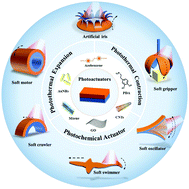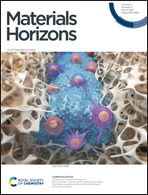Light-driven bimorph soft actuators: design, fabrication, and properties
Abstract
Soft robots that can move like living organisms and adapt to their surroundings are currently in the limelight from fundamental studies to technological applications, due to their advances in material flexibility, human-friendly interaction, and biological adaptation that surpass conventional rigid machines. Light-fueled smart actuators based on responsive soft materials are considered to be one of the most promising candidates to promote the field of untethered soft robotics, thereby attracting considerable attention amongst materials scientists and microroboticists to investigate photomechanics, photoswitch, bioinspired design, and actuation realization. In this review, we discuss the recent state-of-the-art advances in light-driven bimorph soft actuators, with the focus on bilayer strategy, i.e., integration between photoactive and passive layers within a single material system. Bilayer structures can endow soft actuators with unprecedented features such as ultrasensitivity, programmability, superior compatibility, robustness, and sophistication in controllability. We begin with an explanation about the working principle of bimorph soft actuators and introduction of a synthesis pathway toward light-responsive materials for soft robotics. Then, photothermal and photochemical bimorph soft actuators are sequentially introduced, with an emphasis on the design strategy, actuation performance, underlying mechanism, and emerging applications. Finally, this review is concluded with a perspective on the existing challenges and future opportunities in this nascent research Frontier.

- This article is part of the themed collection: Recent Review Articles


 Please wait while we load your content...
Please wait while we load your content...